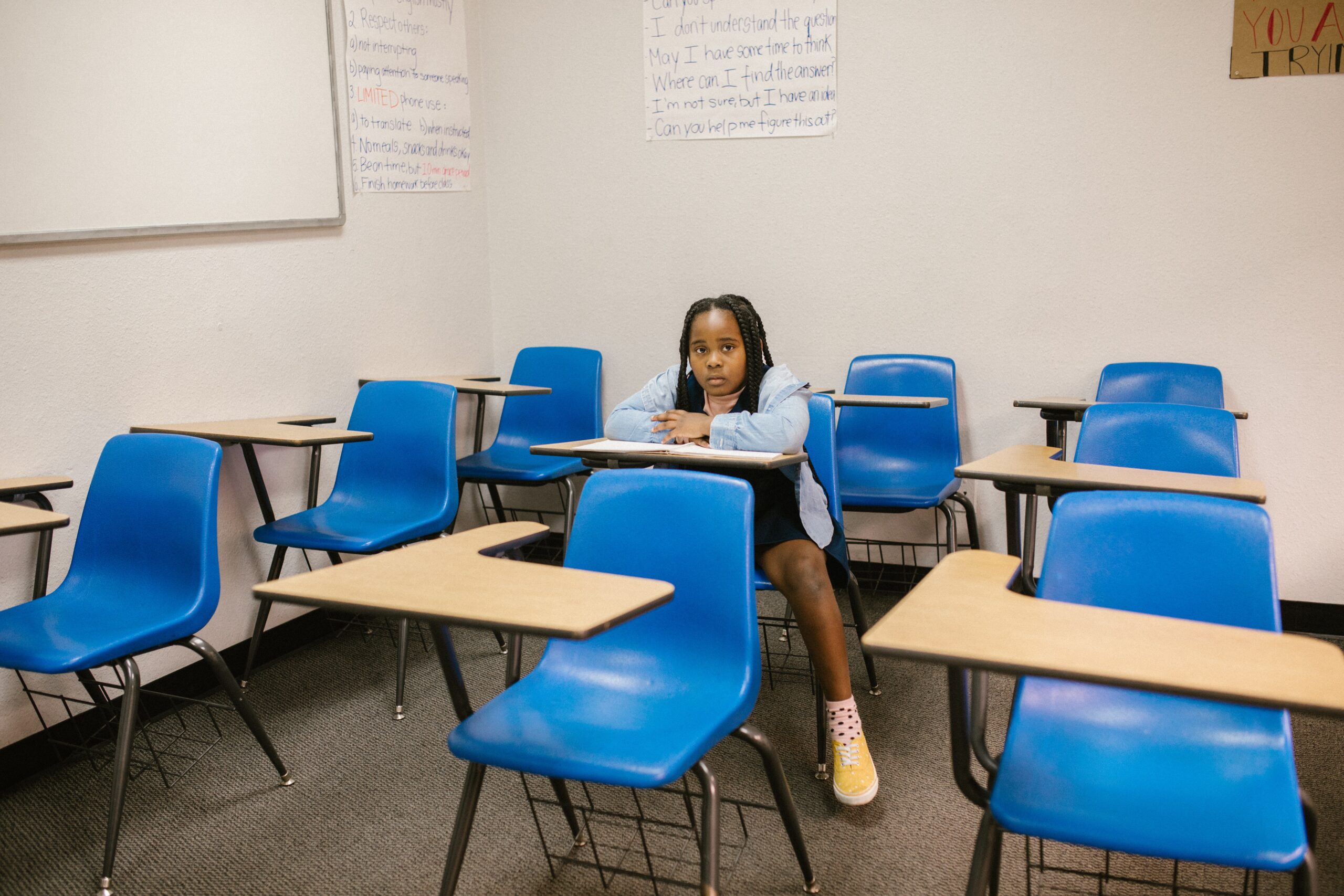
By
When the Create a Respectful and Open World for Natural Hair — or C.R.O.W.N Act as most people know it — was first passed in California in 2019, it signaled to the nation that discriminating against Black students or employees with natural hairstyles like afros, braids, bantu knots, locs, and twists would no longer be legal in the world’s fourth-largest economy.
The legislation, which has since spread to a total of 24 states, means it’s against the law to force Black people to alter what grows out of our heads to be seen as smart or professional at work.
And natural kinks, coils, and curls can no longer violate school dress codes either.
But how many school districts are actually following the CROWN Act? Apparently not Barbers Hill High School in the Houston suburb of Mount Belvieu, Texas.
Within the same week of the Lone Star State adopting the C.R.O.W.N Act, 17-year-old Barbers Hill student Darryl George was suspended because school officials said his locs violated the school dress code. The teen has been suspended since Aug. 31, and the family’s attorney said if the district said if he doesn’t cut his hair by next week, he’ll have to attend an alternative school.
This has everything to do with the administration being prejudiced toward Black culture.
DAREESHA GEORGE
The school said the length of his hair is the problem. The Barbers Hill Independent School District dress code prohibits male students from having hair longer than the eyebrows, ear lobes, or top of a T-shirt collar. In addition, the hair of all students must be clean, well-groomed, geometrical, and not an unnatural color or variation.
“What they’re really saying is you’ll never be able to wear [this style],” state Rep. Ron Reynolds (D) told the Washington Post. It’s hard to say you can wear locs but you want them to be very short. That’s not really how it works,” he said.
According to Darryl’s mother, Dareesha George, her son’s hair is typically tied up and twisted into intricate styles that don’t showcase any length.
“My son is well-groomed, and his hair is not distracting from anyone’s education,” Darresha George told the Associated Press. “This has everything to do with the administration being prejudiced toward Black culture.
Candice Matthews, a Texas-based civil rights activist with the New Black Panther Nation, told the Washington Post that what’s happening to Daryl George is “personal because it’s your heritage, it’s your culture.”
As Matthews, who is helping the teens’ family, pointed out, “This is from our ancestors. How dare [they] try to rip that from us.”
“You don’t see us trying to control White people’s hair,” she said. “So why are [they] trying to control ours?”
A Pattern of Hair Discrimination
Attacks on Black hairstyles are nothing new in the nation’s schools — and in the past decade, many of the controversies have garnered national attention.
Who can forget how in 2018 in New Jersey, Buena Regional High School wrestler Andrew Johnson was forced to cut his locs or forfeit a match? A white referee told the Black high school wrestler to either cut his dreadlocks or forfeit the match. The viral viral of the young athlete cutting his locs piece by piece on the sideline sent ripples through social media, particularly in the Black community.
The incident prompted the referee’s suspension and sparked the passage of the state’s C.R.O.W.N Act in 2019.
But Black girls are also targets of hair discrimination. The 2021 Dove CROWN Research Study for Girls found that 45% of Black school girls ages 5 to 18 have experienced hair bias and discrimination. And 86% of Black teens who experienced hair discrimination said it had happened by age 12.
45% of Black school girls ages 5 to 18 have experienced hair bias and discrimination.
For example, in 2013, 7-year-old Tiana Parker was sent home from her school in Ohio after being told that her locs weren’t “presentable.” In 2017, two teen girls in Massachusetts were targeted for having extensions in their braids and were banned from school activities and their prom. 2018, two girls were sent home from their Catholic school in Louisiana for their hair violating the dress code — extensions in braids also weren’t allowed. The parents sued, and a judge blocked the school’s policy.
Discretionary Violations Result in Suspensions
As Howard Henderson and Jennifer Wyatt Bourgeois wrote for Brookings in 2021, “Black students are three to six times more likely to be suspended or expelled from school, and today, there remains a regressive movement that continues to criminalize natural Black hairstyles under the auspices of ‘preparing them for the real world.’”
Black students are more likely to be suspended for discretionary reasons such as dress code or long hair violations.
HOWARD HENDERSON AND JENNIFER WYATT BOURGEOIS
They found that “Black students are more likely to be suspended for discretionary reasons such as dress code or long hair violations, neither of which have been found to be predictive of student misconduct.”
They also recommended that “we recommend that all school personnel who have the power to enforce the dress code participate in validated cultural sensitivity training.
Barbers Hill previously clashed with another Black male student over the dress code. Officials told a student he had to cut his dreadlocks to return to school or participate in graduation in 2020, which garnered national attention.
Meanwhile, Greg Poole, who has been the Barbers ISD district superintendent since 2006, said the school’s policy is indeed legal and is a form of teaching students to conform as a sacrifice that benefits everyone.
“When you are asked to conform … and give up something for the betterment of the whole, there is a psychological benefit,” Poole said. “We need more teaching (of) sacrifice.”



